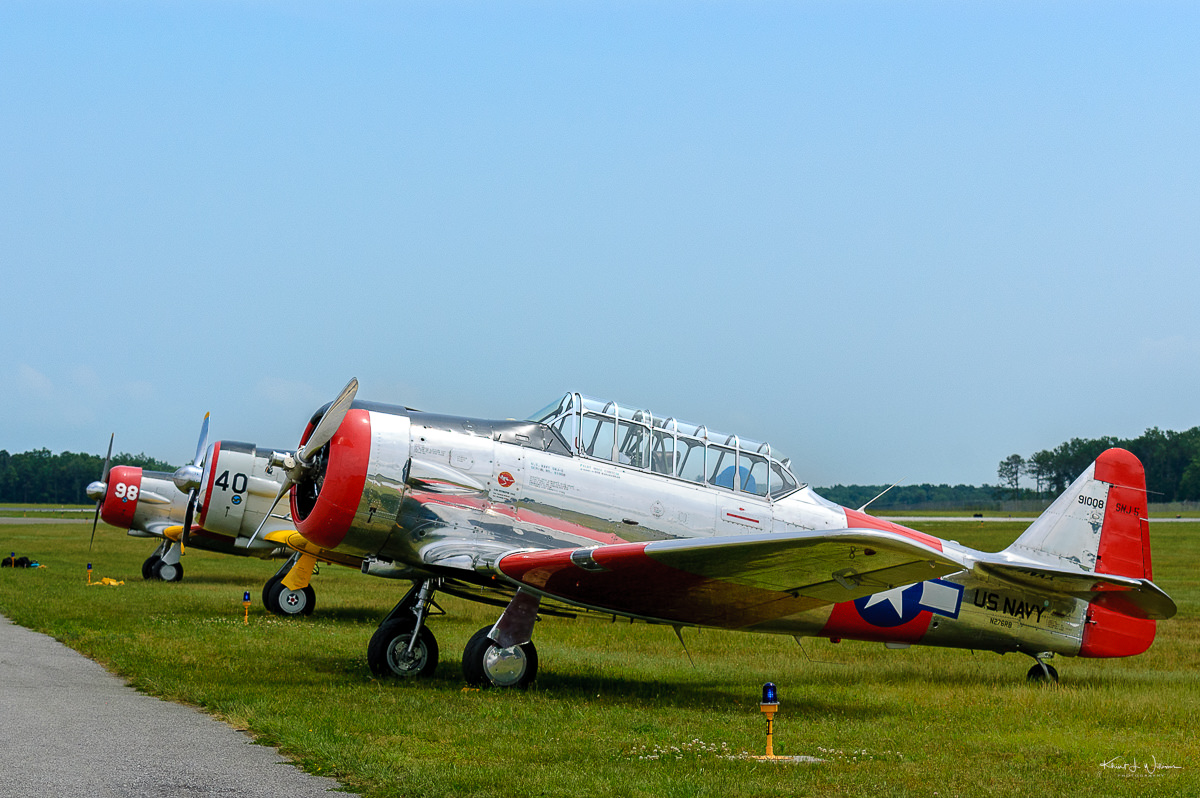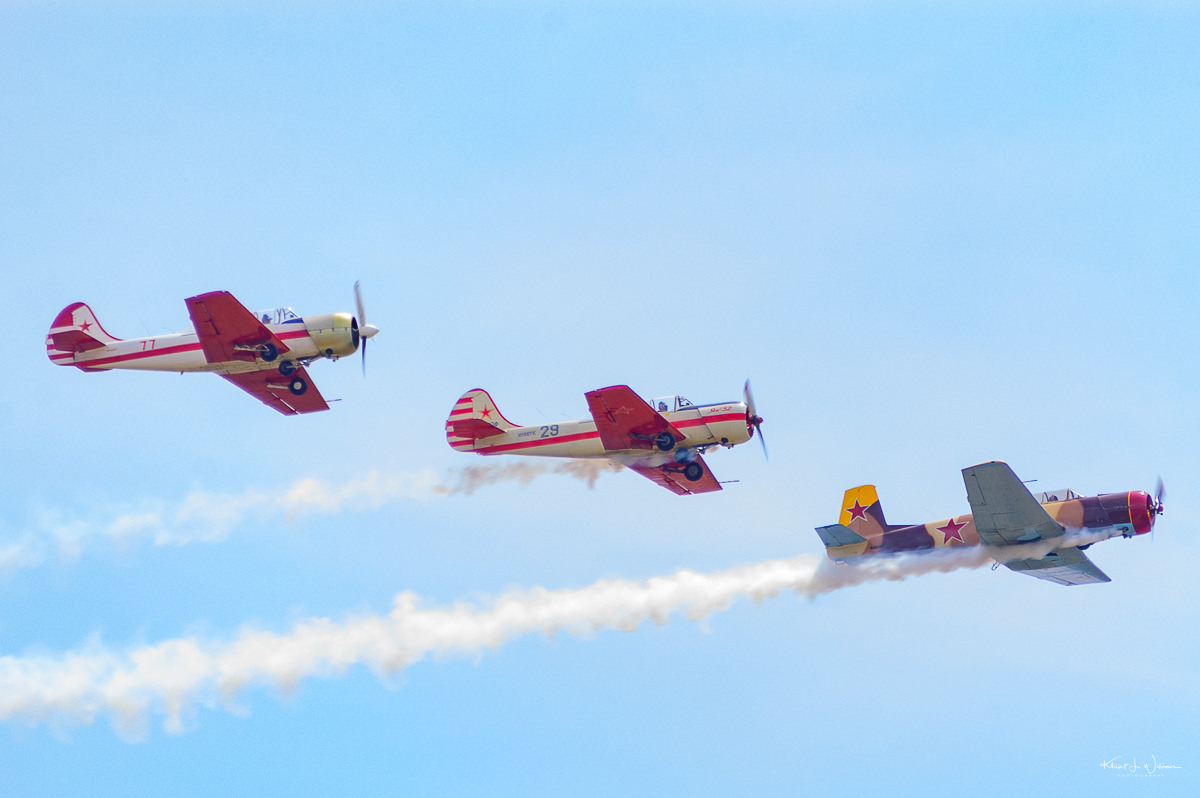This is another set of photographs I captured at the 2011 Millville Wings and Wheels Airshow. In the photograph is a trio of well-preserved aircraft, North American Aviation SNJ-5s from World War II. These 1943 SNJ-5s, also known as the AT-6 Texan or the British Harvard, are showcased in pristine condition beneath the expansive New Jersey sky.
Each aircraft in the lineup bears a distinctive number—'98' and '40'—with their radial engines resting silently. The open cockpits, arranged in tandem seating, invite spectators to envision taking command, gripping the controls, and taking flight.
The foremost aircraft, distinguished by its silver fuselage, reflects the daylight brilliantly. It features a bold red nose and wingtips, drawing attention to the U.S. Navy insignia—a star encircled by a blue ring—an emblem of service and courage.
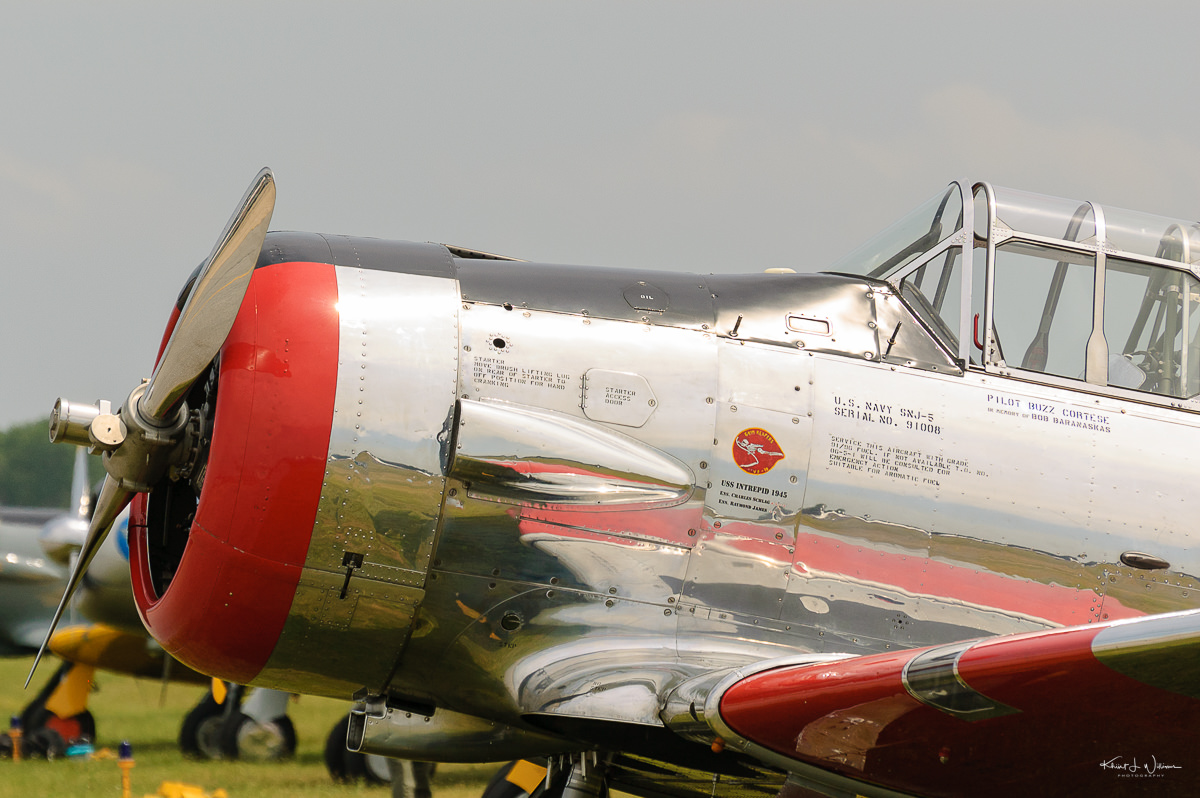
Though stationary in the photo, the propeller seems ready to slice through the air, illustrating the aircraft's eagerness to soar again. Adjacent to the propeller, a service label provides a connection to its operational history, with faded instructions serving as a reminder of the procedures that kept this aircraft flying.
Etched on the aircraft's side is interesting information: "U.S. Navy SNJ-5, Serial No. 91008." Beneath this, a commendation reads "U.S.S. Intrepid 1945," indicating its service aboard this aircraft carrier during World War II.
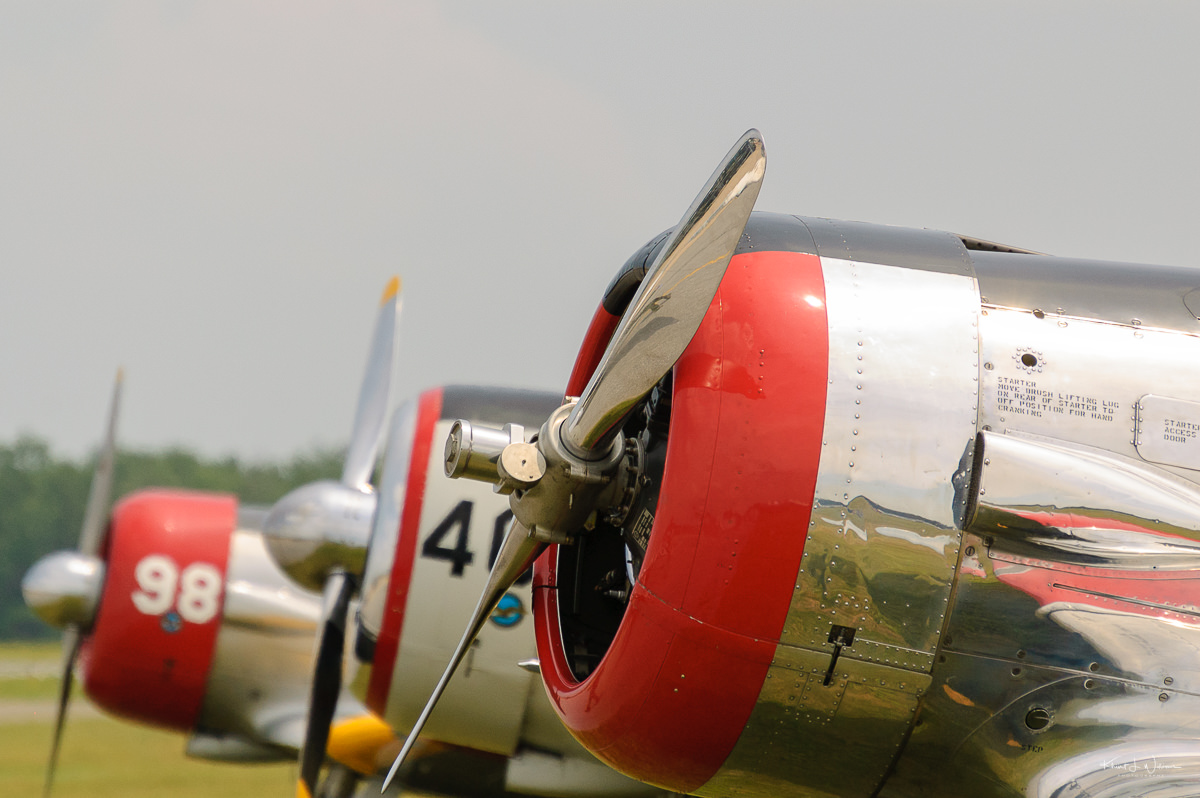
With its canopy retracted, the cockpit reveals traces of a pilot's presence, waiting for his return. The name "Pilot Buzz Cortese" pays homage to its former pilot, while "In memory of Bob Baranaskas" adds a poignant note of remembrance, perhaps for a friend.
These aircraft invite visitors to walk among these living works of engineering, touch the riveted metal, and sense the weight of decades of flight and the spirit of those who once piloted them.
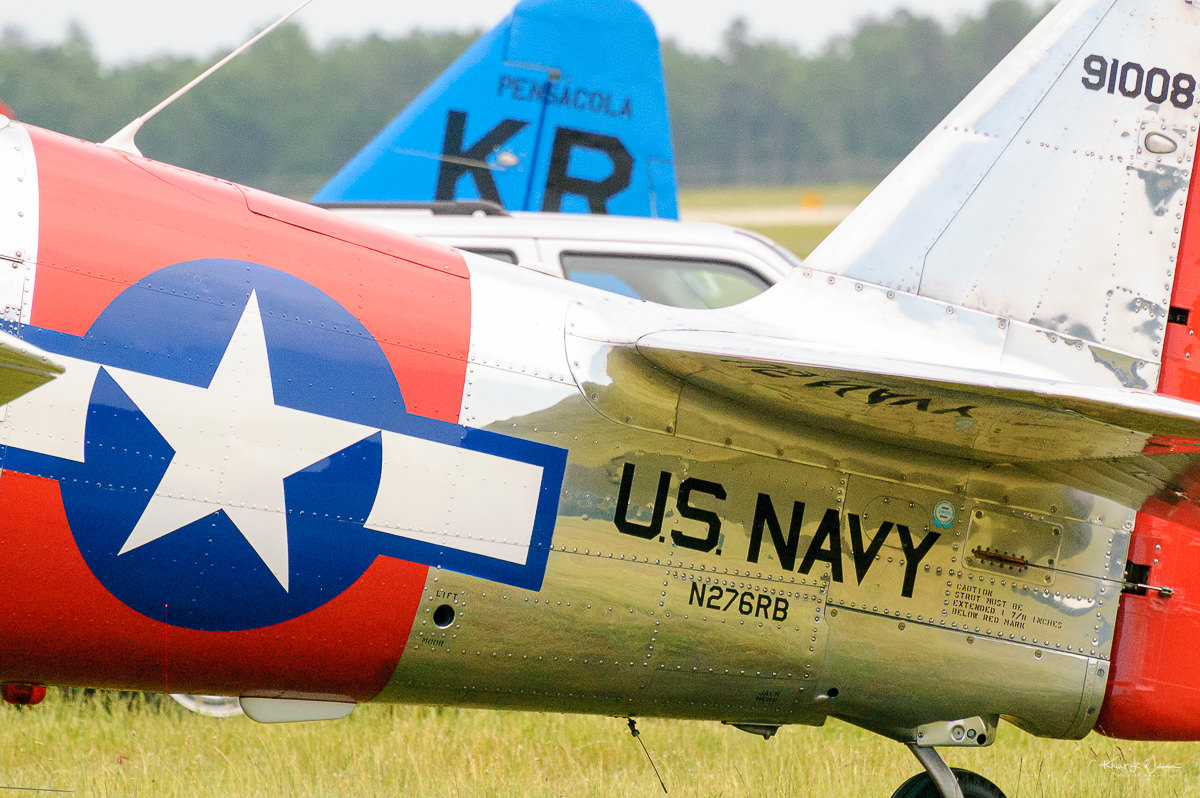
The shining metal exteriors, the symmetrical designs, and the unwavering strength of these warbirds inspired my reflection and reverence for the craftsmanship and bravery they represent.
